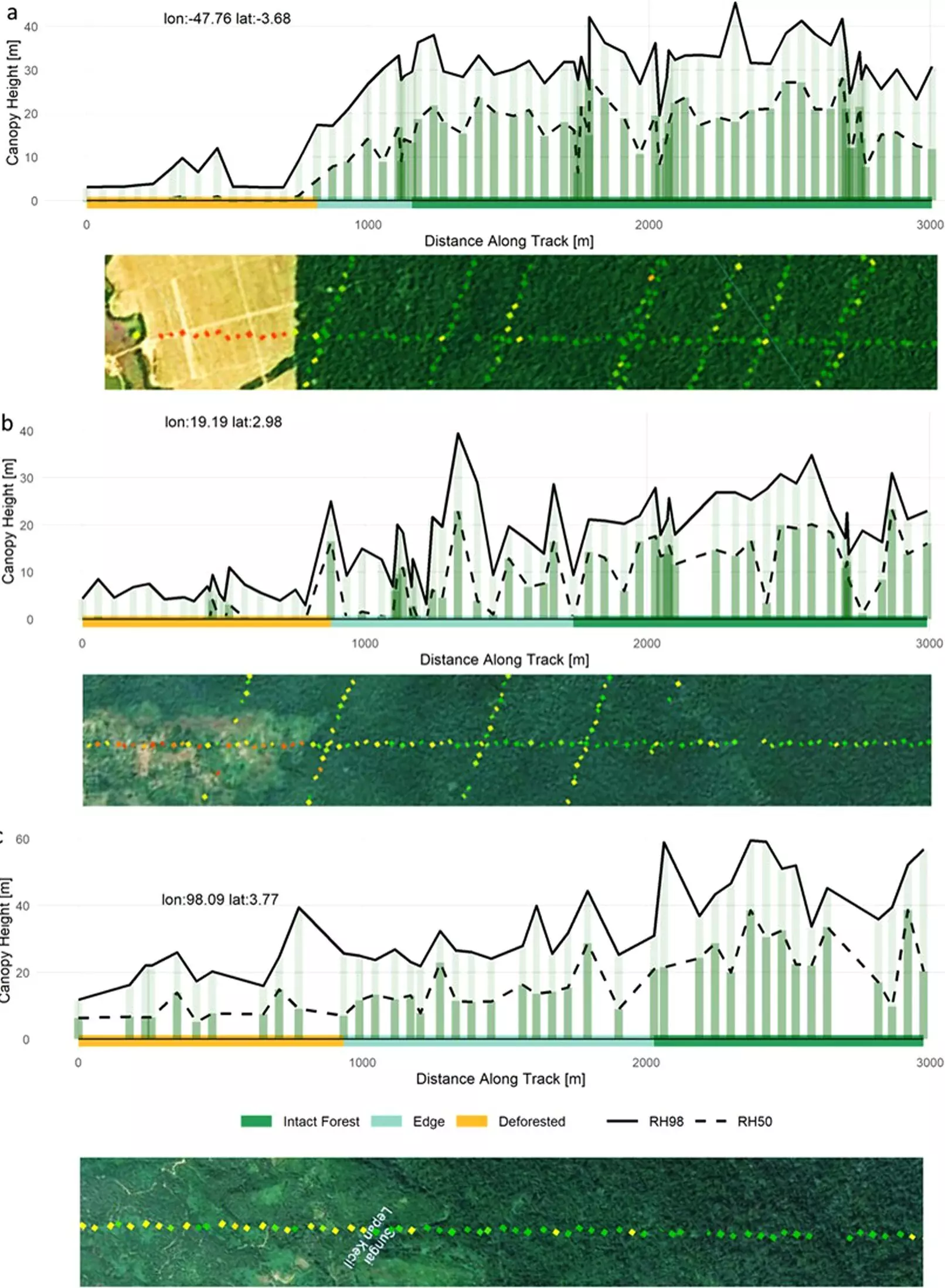

Tropical forests play a crucial role in sustaining biodiversity and mitigating climate change. Despite the significance of these forests, they are facing serious threats from deforestation, fragmentation, and degradation driven by human activities. A recent study published in Nature sheds light on the extent and long-lasting effects of human-driven degradation in tropical moist forests, highlighting the urgent need for intervention to protect these valuable ecosystems.
While deforestation is a widely recognized issue, the study reveals that the effects of degradation and fragmentation on tropical forests are often underestimated. Human activities such as selective logging, fire, and edge effects contribute to the degradation of these forests, leading to significant carbon emissions and biodiversity loss. Despite its substantial impact, degradation is frequently overlooked in policies aimed at reducing greenhouse gas emissions, emphasizing the need for greater attention to this issue.
The study utilized cutting-edge technology from the Global Ecosystem Dynamics Investigation (GEDI) instrument on the International Space Station to quantify degradation and fragmentation of tropical forests. By combining GEDI’s forest structure and biomass estimates with satellite observations of forest cover change from 1990 to 2022, the researchers were able to uncover the hidden human footprint on tropical moist forests and assess its enduring effects.
Fragmentation caused by agricultural or road expansion impacts forests at their edges by reducing canopy height and biomass by 20-30%. The study also revealed that the edge effect extends further into the forest, leading to smaller canopy heights and reduced biomass even 1,500 meters inside intact forests. This far-reaching impact threatens up to 18% of tropical moist forests, emphasizing the need to address fragmentation and edge effects to protect these ecosystems.
Low-intensity disturbances can reduce canopy heights by 20-80% and alter canopy structure over 20 to 30 years, highlighting the long-term effects of degradation on tropical forests. Furthermore, degraded forests are more vulnerable to additional natural disturbances, reducing their resilience and long-term sustainability. Cumulative human disturbances increase the likelihood of complete deforestation once 50% of the canopy height is lost, emphasizing the importance of addressing degradation to prevent irreversible damage to these ecosystems.
The study provides new insights into identifying forests most vulnerable to agricultural or other human expansions, reinforcing the need for their protection. The hidden human footprint of tropical forest degradation and its enduring effects call for greater efforts to prevent degradation and protect already degraded forests to fulfill conservation pledges made at recent United Nations Climate Change and Biodiversity conferences. Addressing the critical issue of forest degradation is essential to safeguarding biodiversity and mitigating climate change, underscoring the importance of taking immediate action to preserve these valuable ecosystems.
Cells form the foundation of all living organisms, and gaining insights into their inner workings…
Mosquitoes are not just an irritating nuisance; they are deadly vectors that transmit a range…
In the quest for sustainable living, consumers often hold fast to the belief that glass…
For over a century, the astral mystery surrounding Barnard's Star, a unique red dwarf just…
In the realm of catalysis, particularly in the context of oxygen evolution reactions (OER), understanding…
Recent research has illuminated a groundbreaking connection between blood donation frequency and the health of…
This website uses cookies.